Portal for more climate-friendly mobility
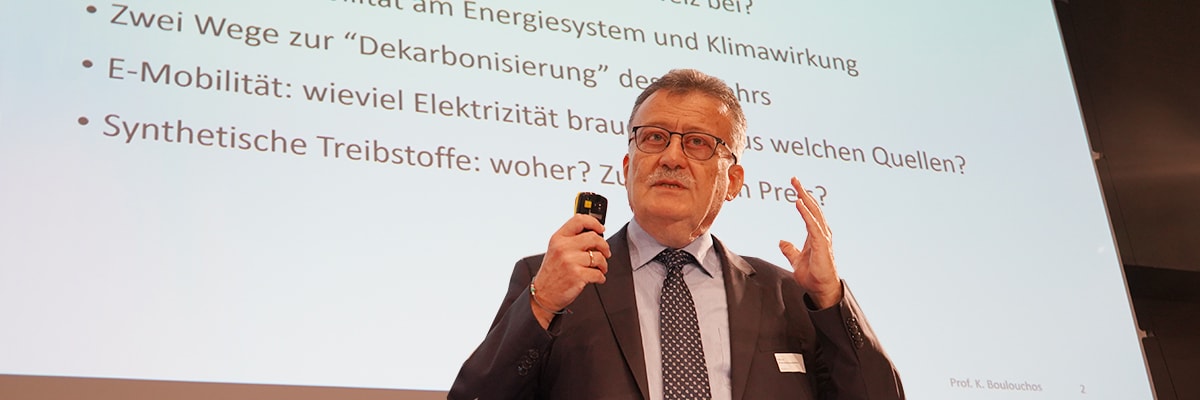
Electricity alone is not an option
The transport sector generates a large share of CO2 emissions in Switzerland. Electromobility will enable rapid and efficient transformation – but by no means in all cases, as three well-known experts point out to the magazine «Die Volkswirtschaft».
Click here for the uncommented original article from “Die Volkswirtschaft” of 23.12.2022
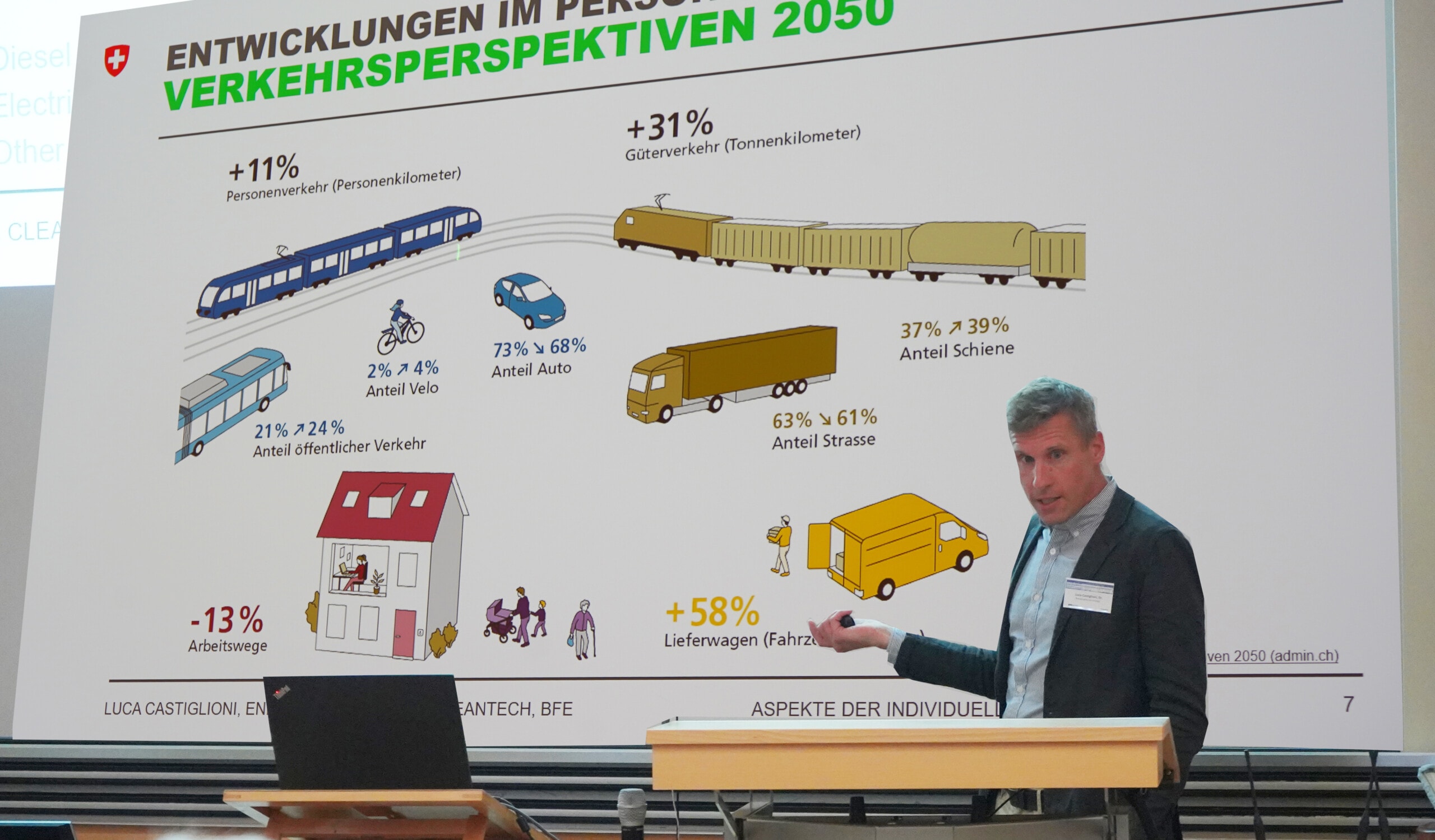 Luca Castiglioni, Head of Mobility Research at the Swiss Federal Office of Energy, outlines the transport perspectives and the federal government’s plans. Source: CNG-Mobility.ch
Luca Castiglioni, Head of Mobility Research at the Swiss Federal Office of Energy, outlines the transport perspectives and the federal government’s plans. Source: CNG-Mobility.ch
Taking into account all the energy sources used, the transport sector is currently by far the biggest end-user of energy in Switzerland at 38%: a good reason for a more in-depth analysis by the experts Luca Castiglioni, Head of Mobility Research at the Swiss Federal Office of Energy, Matthias Gysler, Head of Market Regulation at the Swiss Federal Office of Energy, and Konstantinos Boulouchos, Emeritus ETH Professor. They came up with some intriguing results – as they explained to the magazine «Die Volkswirtschaft» in the article «Is the electricity enough for the transformation?».
Share of transport modes in domestic CO2 emissions (2019)
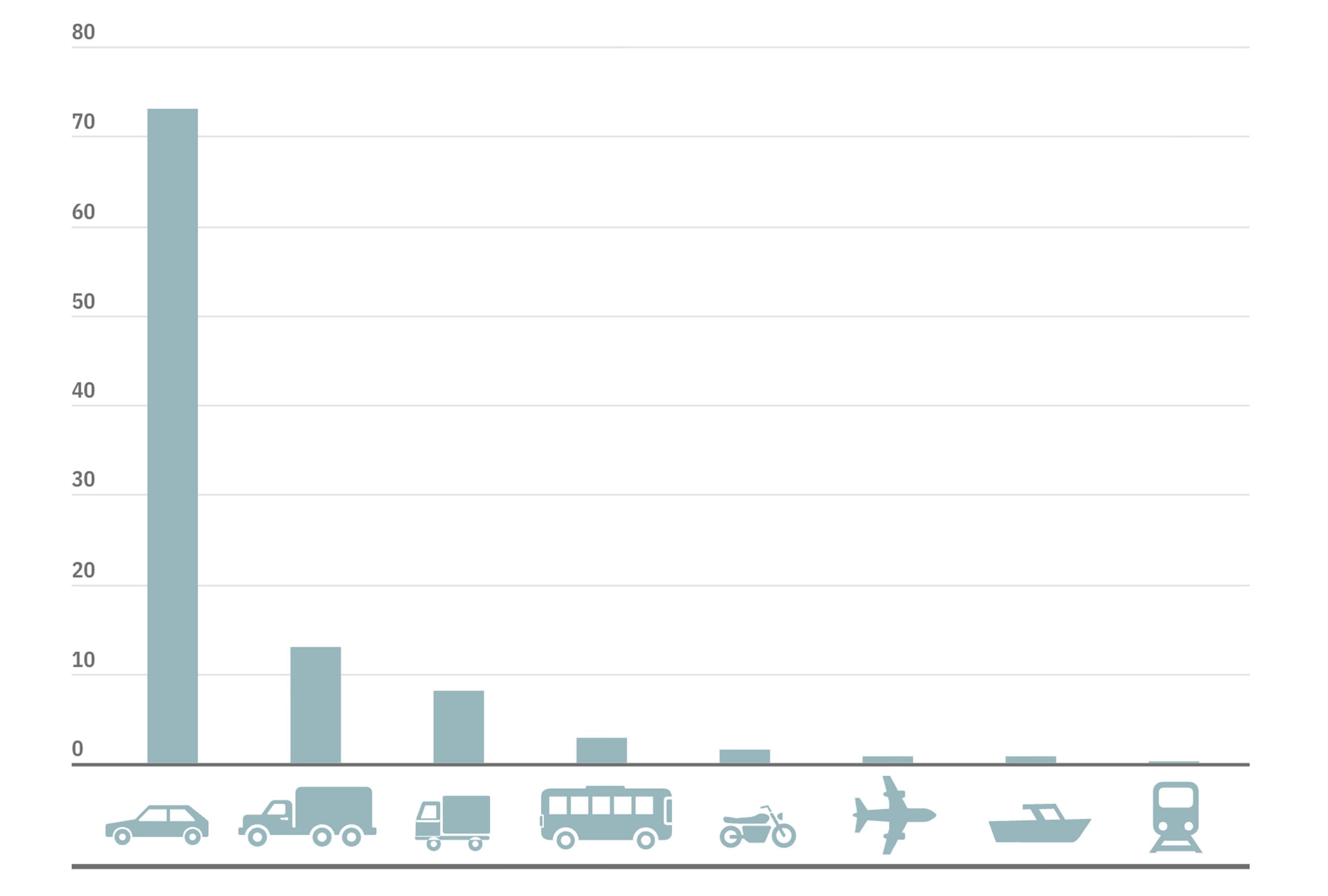
Source: Bafu Greenhouse Gas Inventory 2019/«Die Volkswirtschaft»
For example, the transport outlook for Switzerland assumes that by 2050, domestic passenger transport will increase by 11%. This would mean an even higher level of emissions. Passenger cars emit the most CO2 in the transport sector at over 70%, and every combustion engine sold today will remain on the road for another 15 to 20 years, so CO2 emission levels are clearly set to remain high. These can best be reduced on a local basis if combustion engines are replaced with electric motors. However, electric cars need energy, too. In the current fraught supply situation on the energy markets, the question arises as to whether it will be possible to meet this additional demand for electricity at all.
 In light goods transport, according to the experts for fine distribution and delivery, an increasing electrification of vehicles is emerging. But here, too, there are CNG vehicles that are already almost CO2-neutral on the road thanks to biogas. Source: Ford
In light goods transport, according to the experts for fine distribution and delivery, an increasing electrification of vehicles is emerging. But here, too, there are CNG vehicles that are already almost CO2-neutral on the road thanks to biogas. Source: Ford
As things stand, energy consumption in road traffic – 59 terawatt hours – is at almost exactly the same level as electricity consumption in Switzerland. Thanks to enormous efficiency gains, the researchers expect the increased demand for electricity to be significantly lower in the future if road traffic is fully electrified. Their projection here is around 8 to 16 terawatt hours. What is more, electric cars could be recharged precisely when electricity production is at its maximum in the future – and they could give off energy during peak loads, thereby ensuring greater flexibility and stability in the power grid.
In the area of light freight transport, too, as with passenger cars, there are signs of increasing electrification of vehicles for detailed distribution and delivery to end customers. But it is still the case that electric powertrains reach their limits in heavy traffic. Shifting to rail is a very low-emission option, but it is not always feasible for operational reasons. One alternative here are trucks that are powered by CNG and LNG: if they run on biogas or bio-LNG, these are virtually carbon-neutral. The same applies to the 50 or so hydrogen trucks that are already on the road in Switzerland. By contrast, battery-powered trucks capable of covering distances of 500 kilometres per day or more are still very expensive and heavy.
 Although not exempt from the HVF, biogas trucks are already making an important contribution to lower CO2 emissions in heavy goods traffic. Source: CNG-Mobility.ch
Although not exempt from the HVF, biogas trucks are already making an important contribution to lower CO2 emissions in heavy goods traffic. Source: CNG-Mobility.ch
Since hydrogen engines are exempt from the output-related heavy-duty vehicle tax (LSVA), they are already able to compete with diesel engines in terms of overall cost, despite the high acquisition costs involved. No reduction is to be expected for biogas-powered vehicles before the next amendment to the LSVA – even though they offer a virtually carbon-free option for getting from A to B. Another conceivable alternative is synthetic fuels. These can be used as a one-to-one replacement for diesel, enabling the existing fleet and infrastructure to be retained.
E-fuels do involve high transformation losses, but at least they ensure the surplus electricity is used, thereby avoiding wastage. E-fuels only make sense if direct electrification is not possible. In aviation in particular, so-called sustainable aviation fuels will be the only alternative to kerosene in the foreseeable future. What is more, according to experts Luca Castiglioni, Matthias Gysler and Konstantinos Boulouchos, hydrogen will remain a rare commodity for a long time to come. They say that for this reason it should be used wherever there are no other alternatives – in high-temperature industrial processes such as steel or cement production, for example.
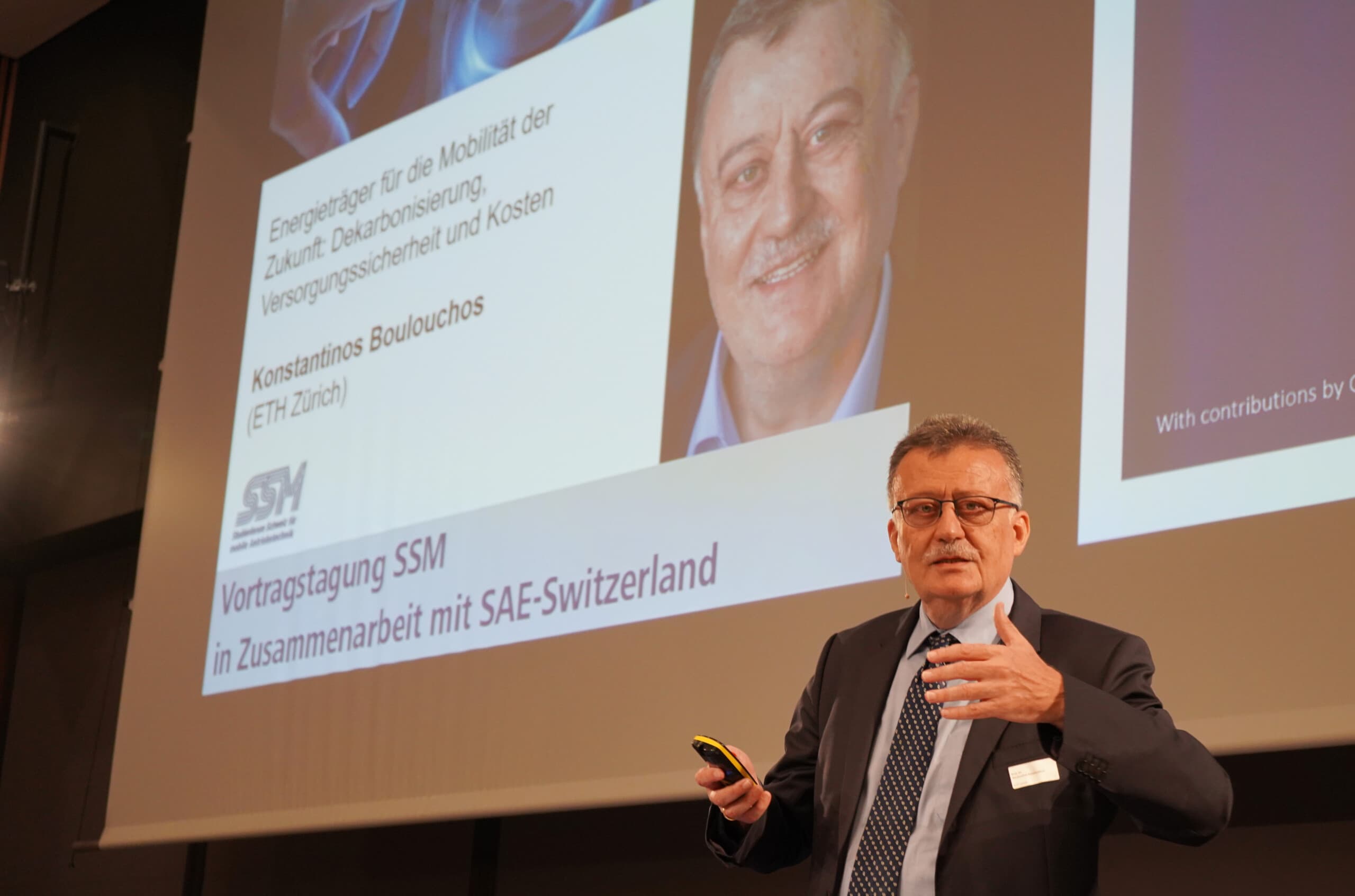 ETH professor emeritus Konstantinos Boulouchos explains details of Switzerland’s future energy needs. Source: CNG-Mobility.ch
ETH professor emeritus Konstantinos Boulouchos explains details of Switzerland’s future energy needs. Source: CNG-Mobility.ch
In order to drive the transformation forward, a rapid expansion of the required infrastructure will be essential, primarily the charging infrastructure, as well as renewable energy, including not only wind and solar energy but also biogas. It is true that the additional electricity required to decarbonise the transport sector is limited. But only the combination of other sustainable energy sources such as hydrogen, synthetic fuels and biogas can ensure the required diversification and greater resilience in times of crisis.
Looking at the transport sector from a global perspective, there are two other major modes of transport to be considered: aviation and cargo shipping, both of which involve the transportation of large bulk over enormous distances. This makes direct electrification difficult – and probably impossible for the foreseeable future in the case of commercial aviation. LNG is currently gaining in importance in the shipping sector in particular, always with the aim of replacing fossil LNG with sustainable bio-LNG as soon as possible and thereby significantly reducing CO2 emissions. In other words, exactly the same approach is being adopted here as in heavy goods traffic and passenger transport: the use of LNG or CNG and biogas or synthetic gas to enable virtually carbon-neutral mobility. (pd/jas, 19 January 2023)
You might also be interested in
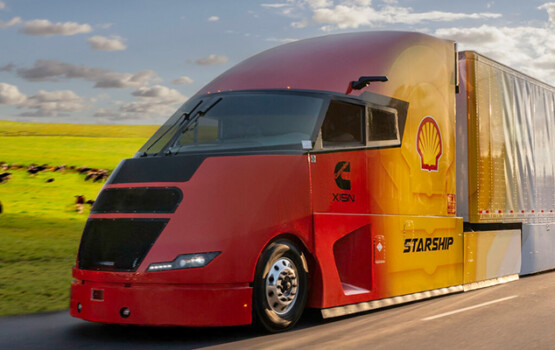
Shell Starship on record hunt
